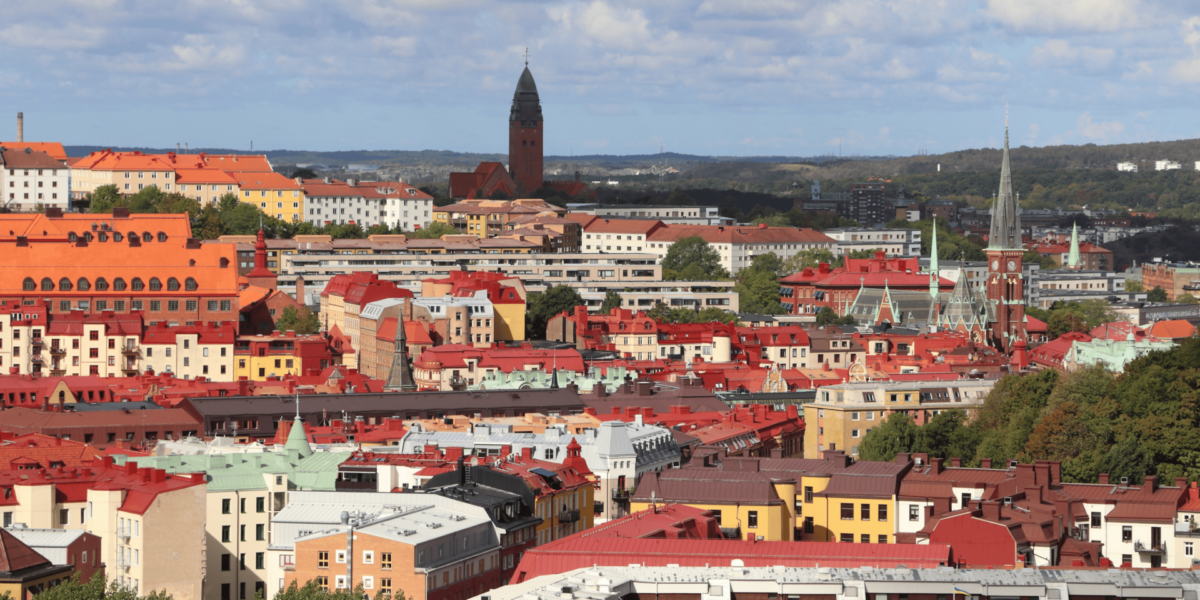Kviberg’s Past Shapes Its Present
Kviberg’s transformation began with its roots as a military site. Once home to military barracks and training fields, the area served defense needs for decades before its civilian transition began.
Today, the historical layout still influences how the neighborhood is structured. Wide open spaces, central pathways, and durable buildings remain, but their functions have shifted. Former training grounds now host public parks, and preserved structures house schools, businesses, and cultural institutions. Kviberg’s architecture holds onto the past without letting it define the future.
The Shift to Civilian Use Opened New Opportunities
After military operations ended, Gothenburg officials and urban developers reimagined Kviberg’s purpose. This shift involved detailed planning and investment in long-term infrastructure.
The area was repurposed not just for housing, but for full-scale urban living. Planners avoided isolating residential buildings by including services, transport, and recreation in early designs. As a result, Kviberg attracted both private development and public services, turning it into a self-sufficient neighborhood instead of a satellite zone.
Urban Planning Focused on Integration
Kviberg’s redevelopment wasn’t handled in isolation. Planners focused on integrating the area into greater Gothenburg, ensuring residents could access city-wide services without difficulty.
Tram lines connect Kviberg directly to central Gothenburg. Bike paths run through the district, linking schools, shops, and parks. A person moving into the area can commute easily, reach major shopping centers, and connect to wider transport networks. This integration reduces dependence on cars and supports environmental goals.
Residential Design Reflects New Priorities
The housing in Kviberg represents a shift from rigid structures to livable, energy-efficient homes. Designs emphasize light, space, and sustainability, while honoring the site’s history through material choices and layout.
Buildings are constructed with natural materials, large windows, and shared green areas. Rooftops often include gardens or solar panels. Inside, layouts favor open-plan living. This design approach supports both individual comfort and shared community values. People live in homes that feel modern, but still connected to Kviberg’s architectural past.
Community Facilities Support Daily Life
Kviberg’s new role as a neighborhood required services that go beyond housing. Schools, gyms, clinics, and cultural centers now occupy key sites across the area.
A parent drops off their child at a local school, visits a nearby grocery store, then walks to a coworking space—all within the same district. These facilities reduce travel and create routines built around the neighborhood. The focus is on livability—ensuring people can meet their needs without leaving the area.
Open Space Preserves the Site’s Original Character
Kviberg has retained large open areas once used for drills and training. Instead of being developed, these spaces now serve as parks, walking paths, and public gathering areas.
A local resident walks their dog through fields that once held military exercises. Children ride bikes on converted training routes. These areas are maintained, not as monuments, but as usable parts of daily life. Their size and location shape how people move and interact, offering openness that is rare in dense urban neighborhoods.
The Sports Center Anchors Kviberg’s New Identity
At the heart of Kviberg stands one of Scandinavia’s largest sports facilities. This complex plays a major role in the neighborhood’s evolution, drawing both residents and visitors year-round.
A person living in Kviberg might walk to the sports center for a morning session, pass athletes training nearby, and return home through the same streets used for leisure and transit. The sports hub supports local health and drives economic activity, while adding energy to the neighborhood.
Local Business Development Enhances Sustainability
Kviberg’s growth includes small businesses and services that meet local demand. These businesses occupy new buildings and renovated military structures, supporting both commerce and heritage.
Shops, cafés, and studios fill ground floors, while upper levels house offices or apartments. This mixed-use strategy keeps the area active throughout the day. Residents support businesses they see regularly, building familiarity and mutual reliance. Kviberg’s design gives small business a lasting role in the area’s evolution.
Cultural Preservation Strengthens Identity
Despite modern development, Kviberg still reflects its military past through preserved architecture and subtle design choices. These elements create continuity and keep the neighborhood’s identity grounded.
Original brick buildings now house museums and art centers. Street names reference historical functions. Architectural lines remain visible in adapted structures. Visitors walking through the area notice that Kviberg’s evolution doesn’t erase history—it builds on it. This approach adds depth to the neighborhood’s character.
Sustainable Infrastructure Guides Growth
Kviberg’s redevelopment includes sustainability at every level—from building materials to waste systems and mobility solutions. The district is part of Gothenburg’s broader push for climate-friendly living.
Recycling stations, solar panels, and efficient heating systems are standard features. Rain gardens manage runoff, and buildings are rated for energy use. A resident in Kviberg actively participates in a neighborhood that prioritizes environmental goals. This commitment shapes daily routines and guides long-term investment.
Kviberg’s Evolution Continues with Purpose
Kviberg is still growing, but its development follows a clear vision. New projects align with established values—sustainability, integration, and balanced design.
Each addition—whether a residential block, community service, or transit line—fits within a larger plan. The area avoids overbuilding or erasing its past. A person looking to move here finds a neighborhood in motion, but not in chaos. Kviberg evolves with direction, building on its unique legacy to shape a livable, connected future.
Kviberg’s Story Reflects Urban Possibility
Kviberg’s shift from military site to modern community shows how careful planning and respect for history can produce a thriving urban district.
It didn’t happen overnight, and it didn’t follow trends blindly. Instead, it followed a strategy built on reuse, integration, and livability. Today, Kviberg stands as a model for how cities can transform unused land into lasting, inclusive neighborhoods—where history informs the present and supports the future.
